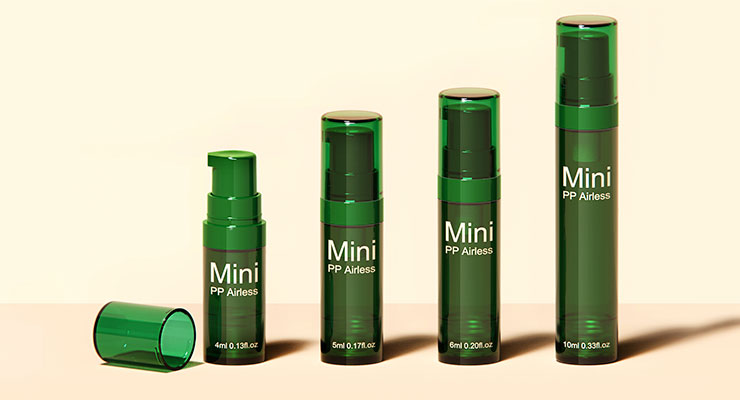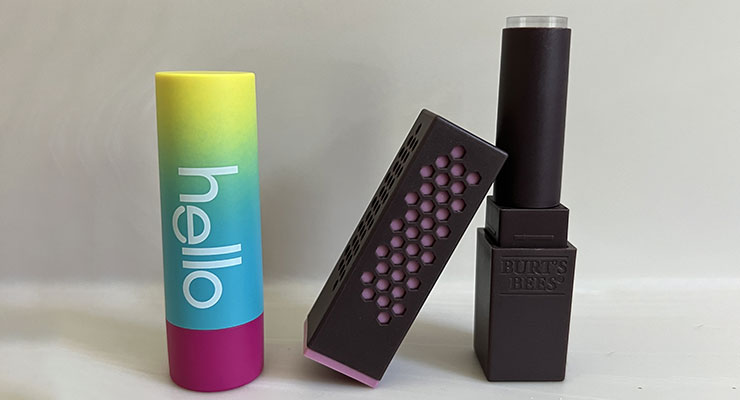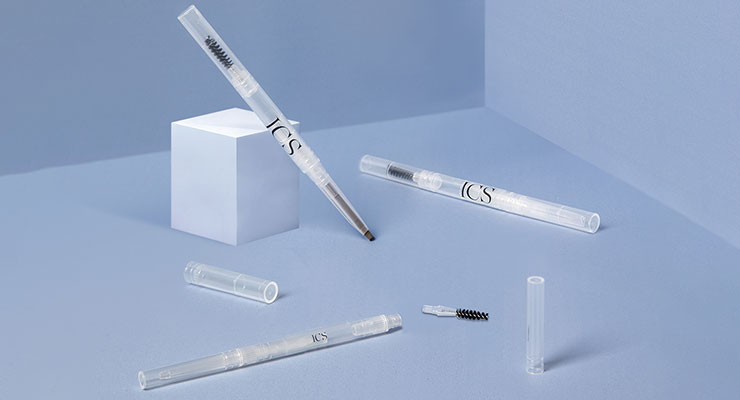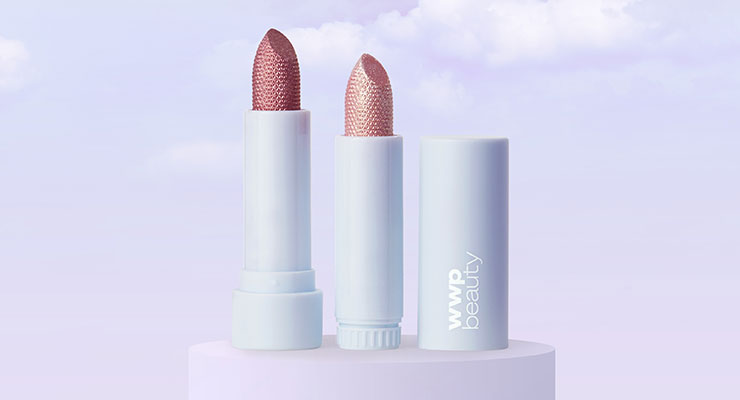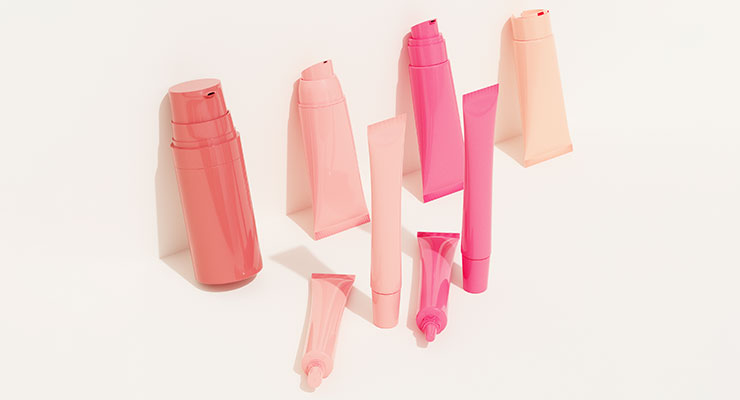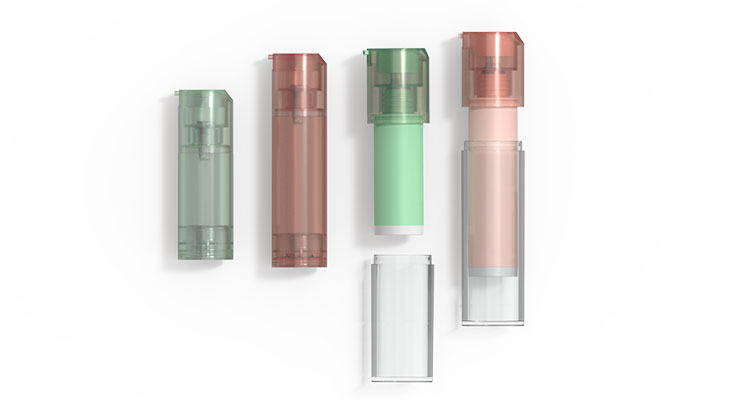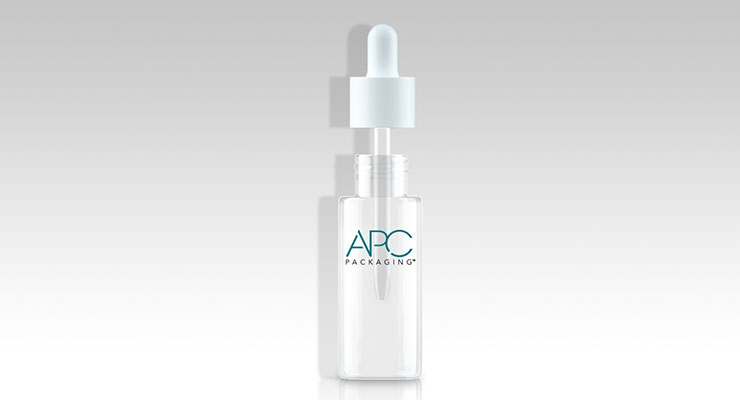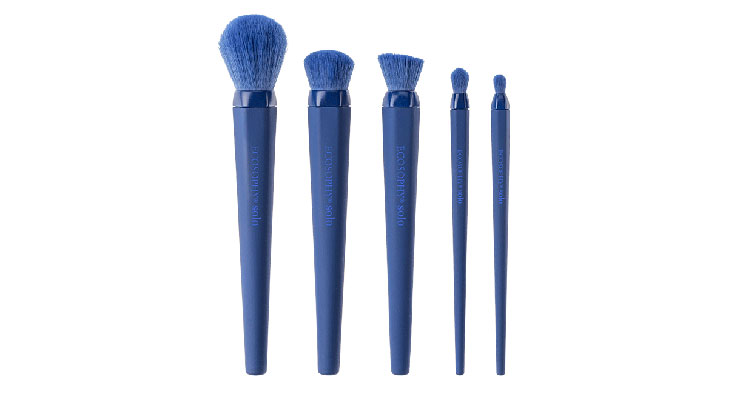Joanna Cosgrove, Contributing Editor10.24.22
For brands keen on furthering their commitment to eco-consciousness, mono-material packaging comprised entirely of a single material is increasingly viewed as a fast-track solution to simplify recycling since there’s no need to disassemble and sort a package and its componentry for disposal.
“In addition to not needing disassembly, mono-material packages are beneficial because they are compatible with existing recycling streams and consume much less energy during the manufacturing process, which allows for us to reduce environmental impacts and contribute to a wider circular economy, comments Rachel Marek, senior marketing project manager, PKG Group, who notes that the movement’s origin can be credited to Indie brands that raised awareness of wasteful practices within the industry. “As many brands move towards a circular economy, the demand for recycle-ready packages has expanded.”
Beyond the recycling angle, Ray Lewis, president, Nate Packaging, says another benefit of single material packages is that they have the potential to expedite the process of formula compatibility testing. “If one knows the resin is compatible prior to testing, this could reduce the testing time for a quicker timetable to market,” Lewis comments.
Two aspects of mono-material packaging that continue to improve, Lewis says, are compatibility with current molding tools and decorating applications.
Current molding tools and how they correspond to molding dimensional aspects of packaging—like thick and thin walls—increase the potential for warping or sinking, he says, noting that Nate Packaging has been able to redesign tools to help circumvent these dimensional concerns as it relates to the production of mono material lipsticks and compacts.
“Decorating can be a challenge as PE and PP will need surface treatments prior to decorating in some processes like silkscreen to allow for deco adhesion,” he says. “ABS resin held few challenges for decorating in the past, but is not a recyclable material in today’s circular environment profiles.”
Nate Packaging has developed and produced mono-material packaging since 2010, with single resin PP, PET and HDPE resin packaging spanning lipsticks, compacts, lip balms, mascaras, eyeliner/lip retractable pencils, deodorant sticks, SPF sun care and foundation sticks, jars, bottles and tubes. “Our mono-material packaging has been driven by our vision to 100% recycle more of our common personal care plastic packaging instead of it being sent to our waste sites across every city in the U.S. due to mixed resin, thus non-recyclable,” Lewis says.
Lewis says Nate Packaging has recently produced molded mono-material lipstick packaging for Burt’s Bees and lip balm tubes for Hello Products using 100% PP and 100% PET.
For Burt’s Bees’ Satin and Glossy Lipsticks, Nate employed a 100% mono PP resin with 60% PCR PP with an all-PP mechanism and a 12.7mm bullet. In-mold logos and other colored decoration highlight the brand’s honeycomb pattern.
Hello Products also sought a mono-material solution for its Unicorn Vegan Lip Balm and worked with Nate to select a 100% mono PET resin with 60% PCR PET paired with a 12.5mm bullet. Package decoration consisted of a yellow and pink in-mold colorant along with two passes of spray color for the brand’s rainbow pattern plus a silkscreened logo.
“The Burt’s Bees lipstick design showed their honeycomb pattern that is iconic to the brand through our custom tool build,” explains Lewis. “Hello Products took a stock tool to show their brand’s whimsical Unicorn through the use of colorants and custom spray colors to achieve a unique rainbow effect using color blending with spray finish technology.”
Mono-material packaging represents one the fastest growing product categories at International Cosmetic Suppliers Ltd. (ICS), which offers a wide range of mono-material staples like jars, bottles, tubes, pan sticks, pencils, compacts, palettes and rollerballs made of either PP, PET or PE.
Mono-material packaging can bring a host of benefits in addition to being easy to recycle, says the company’s Tara Stein, vice president of sales and business development. “For example, the design of our one-piece, mono-material, PE flip-top tubes reduces injection cycle time as well as the assembly process, which in turn cuts energy consumption,” she says. “It is also made with less plastic compared to traditional tubes and is a more cost-effective option.”
At ICS, mono-material packaging options are designed not only to meet aesthetic and sustainability targets, but also to achieve function and performance requirements, all while utilizing the same resin for all injected parts to help to achieve uniform color consistency.
And while recyclability has long remained a challenge for dual-ended pencils with built-in applicators that traditionally contain multiple materials, Stein says ICS’s Mono-Material PP Slim Retractable Brow Pencil with Removable Applicator makes recycling easy. “Simply remove the applicator and pop the rest in the recycling bin,” she exclaims. “[It’s] designed with functionality and sustainability in mind; the barrel, inner mechanisms and caps are all 100% PP [and it’s] available in a variety of brush, comb and sponge applicator styles.”
The development of mono-material packaging is taking two paths at WWP Beauty. The company is adapting existing designs with mono-material constructions as well as developing new designs that are specifically focused on mono-material components.
Gary Myer, vice president of engineering, WWP Beauty, explains that the company is focusing on tooling design and engineering to identify potential material and package capabilities. “For example, crystalline material constructions typically found in lipsticks and compacts would lend themselves to manufacturing with PET, new chemically recycled PETG, and other new, renewably resourced materials under development [because] these are all crystalline materials that exhibit similar properties to ABS, SAN and PETG currently used,” he says. “These package and component types are further focused on because they do not require leak-tight seals that would be required for liquid and semi-liquid formulas.”
The secondary development of new designs and tooling build on an understanding of the physical and chemical property capabilities of available materials. “Some of these materials include iPET, rPET, PCR PP, and PCR HDPE along with new, renewable materials,” he says. “We have made several developments along these lines, which include all PE plastic tubes with the sleeve, tube head and disc-top or flip-top all in the same material, either virgin PE, PCR PE and bio-sourced PE.”
Some of WWP Beauty’s latest mono-material launches include a lip balm package in Biobase Nature2Need; mono-material compacts base, cover and platform in Biobase, IPET, Molecular Recycled Resins; and mono-material tubes in PCR Ocean Plastic, PP and PCR Biobase.
The company also offers all-PET and all-PP lipstick packages. Its Mono-Material Refillable Lipstick is billed as a luxurious, ready-to-recycle mono-material package that features an intuitive and easy-to-refill design. Myer says it reduces 24% CO2e after the first refill and 70% CO2e on the fourth refill compared to a standard lipstick with metal weight.
WWP Beauty’s Mono-Material ColorVue Lipstick is an innovative, 100% mono-material PP lipstick configuration that features a patented R2 Sleeve Mechanism and uses 12% less plastic and 85% less CHC emission per piece than a traditional lipstick package.
One example of innovation is the 100% PE Mono Material Airless Systems from SeaCliff Beauty, a metal-free solution that’s 100% recyclable with no disassembly needed. “Our Mono-Material Airless Systems are used throughout a variety of packaging styles that are ideal for micro-encapsulated formulation in addition to SPF,” explains Amanda Deak, the company’s senior marketing manager. “Depending on the formula we offer a variety of output styles to provide the most accurate dosages for each use.”
The configuration can cater to five different formula viscosities spanning liquids, oils, foundations, lotions and creams. It’s also worth noting that the configuration is available in Green PE (Braskem Sugarcane PE), and SeaCliff’s Sage Airless System technology is validated as the lightest airless system available on the market currently.
Deak says there are few fully recyclable pump delivery system options currently available, however SeaCliff’s 100% PE tube pumps offer a high-quality airless tube pump with easy recycling. “Our tubes are manufactured using a multi-layer process up to six layers, [allowing] customers options like barrier layers or highly decorative layers,” she comments.
Andrea Greff, design manager, NF Beauty Group, says a great feature of mono-material packs is consistency in packaging design and coloration. “Many times, when two different plastics are used for packaging, for example a cap made of PP and a bottle made of PET or ABS, a brand or client will try to match the color injection (for both cap and bottle) to a single benchmark, but when they receive a sample, inherently the two plastics achieve the color in different ways,” she says. “With mono-materials, the colors will be the same for both cap and bottle, achieving the match as needed for a brand.”
One of NF Beauty Group’s mono-material designs is the Calista Bottle, an airless bottle with a modern, capless design and PP parts. The bottle also comes in a refillable format.
PKG Group abides by a pillar of sustainable innovation and offers a range of packages in PE, PP, PET and LDPE that pair with its patent pending, single material bellows pump assembly. The pump is comprised of PP and available in six different dosage options (150mcl, 200mcl, 500mcl, 1cc, 2cc and 3cc) thanks to the company’s manufacturing partnership with Yonwoo. Marek says the pump’s engine replaces the traditional metal spring found inside pumps with a PE bellows spring, and replaces POM with recyclable PP, so the whole pump can be recycled in one piece.
“The bellows pump engine assembles directly into their current stock packages so no custom tooling [is] needed,” explains Andrew McCurdy, sales, PKG Group. “This allows our customers to have a wide variety of options to consider from price competitive packages to high-end luxury components.”
McCurdy notes that the PP bellows pump engine is also available for airless pump tubes with PP tube sleeves so almost 99% of the package is PP with a very small amount of PE.
For brands in search of a responsible and reliable mono-material dropper configuration, APC Packaging has launched a patented mono material dropper and bottle package with an all-PP bulb, dropper collar, pipette, wiper and bottle.
The company’s Robert Bulla, director of engineering and innovation, says it’s the first mono-material dropper on the market that’s not only patented, but also boasts a crystal-clear pipette in contrast to comparable hazy pipettes.
“APC Packaging developed a mono-material system for designing mono-material packages,” he explains. “The result has been astounding because we are not only accomplishing mono-material packages, but we are delivering desirable and aesthetically pleasing solutions to brands.”
The Solo range is recycled and recyclable from its synthetic fibers to handles. Pennelli Faro’s Sara Zanafredi, CEO and owner, explains that the brush production employs innovative technology and processes during the production and assembly of the brushes to avoid the need for glues or metal. There are also no toxic inks used for decoration.
The brushes exemplify the sustainable mindset Pennelli Faro committed itself to when it created its production plant 12 years ago and integrated an environmentally circular ethos into every aspect of its business, including its headquarters, production processes, and the development and production of its products.
One of the first clients to choose Solo is a brand of organic cosmetics. Zanafredi says the brand chose a compact line of five Solo makeup applicators in a customized color because it aligned with their brand philosophy of offering “vegan products realized with simplicity.”
“In addition to not needing disassembly, mono-material packages are beneficial because they are compatible with existing recycling streams and consume much less energy during the manufacturing process, which allows for us to reduce environmental impacts and contribute to a wider circular economy, comments Rachel Marek, senior marketing project manager, PKG Group, who notes that the movement’s origin can be credited to Indie brands that raised awareness of wasteful practices within the industry. “As many brands move towards a circular economy, the demand for recycle-ready packages has expanded.”
Beyond the recycling angle, Ray Lewis, president, Nate Packaging, says another benefit of single material packages is that they have the potential to expedite the process of formula compatibility testing. “If one knows the resin is compatible prior to testing, this could reduce the testing time for a quicker timetable to market,” Lewis comments.
Two aspects of mono-material packaging that continue to improve, Lewis says, are compatibility with current molding tools and decorating applications.
Current molding tools and how they correspond to molding dimensional aspects of packaging—like thick and thin walls—increase the potential for warping or sinking, he says, noting that Nate Packaging has been able to redesign tools to help circumvent these dimensional concerns as it relates to the production of mono material lipsticks and compacts.
“Decorating can be a challenge as PE and PP will need surface treatments prior to decorating in some processes like silkscreen to allow for deco adhesion,” he says. “ABS resin held few challenges for decorating in the past, but is not a recyclable material in today’s circular environment profiles.”
Nate Packaging has developed and produced mono-material packaging since 2010, with single resin PP, PET and HDPE resin packaging spanning lipsticks, compacts, lip balms, mascaras, eyeliner/lip retractable pencils, deodorant sticks, SPF sun care and foundation sticks, jars, bottles and tubes. “Our mono-material packaging has been driven by our vision to 100% recycle more of our common personal care plastic packaging instead of it being sent to our waste sites across every city in the U.S. due to mixed resin, thus non-recyclable,” Lewis says.
Lewis says Nate Packaging has recently produced molded mono-material lipstick packaging for Burt’s Bees and lip balm tubes for Hello Products using 100% PP and 100% PET.
For Burt’s Bees’ Satin and Glossy Lipsticks, Nate employed a 100% mono PP resin with 60% PCR PP with an all-PP mechanism and a 12.7mm bullet. In-mold logos and other colored decoration highlight the brand’s honeycomb pattern.
Hello Products also sought a mono-material solution for its Unicorn Vegan Lip Balm and worked with Nate to select a 100% mono PET resin with 60% PCR PET paired with a 12.5mm bullet. Package decoration consisted of a yellow and pink in-mold colorant along with two passes of spray color for the brand’s rainbow pattern plus a silkscreened logo.
“The Burt’s Bees lipstick design showed their honeycomb pattern that is iconic to the brand through our custom tool build,” explains Lewis. “Hello Products took a stock tool to show their brand’s whimsical Unicorn through the use of colorants and custom spray colors to achieve a unique rainbow effect using color blending with spray finish technology.”
Improved Core Options
Mono-material packaging options are evolving with the times, as providers meet the beauty and personal care segment’s calls for responsible packaging that still delivers a functional and creative punch.Mono-material packaging represents one the fastest growing product categories at International Cosmetic Suppliers Ltd. (ICS), which offers a wide range of mono-material staples like jars, bottles, tubes, pan sticks, pencils, compacts, palettes and rollerballs made of either PP, PET or PE.
Mono-material packaging can bring a host of benefits in addition to being easy to recycle, says the company’s Tara Stein, vice president of sales and business development. “For example, the design of our one-piece, mono-material, PE flip-top tubes reduces injection cycle time as well as the assembly process, which in turn cuts energy consumption,” she says. “It is also made with less plastic compared to traditional tubes and is a more cost-effective option.”
At ICS, mono-material packaging options are designed not only to meet aesthetic and sustainability targets, but also to achieve function and performance requirements, all while utilizing the same resin for all injected parts to help to achieve uniform color consistency.
And while recyclability has long remained a challenge for dual-ended pencils with built-in applicators that traditionally contain multiple materials, Stein says ICS’s Mono-Material PP Slim Retractable Brow Pencil with Removable Applicator makes recycling easy. “Simply remove the applicator and pop the rest in the recycling bin,” she exclaims. “[It’s] designed with functionality and sustainability in mind; the barrel, inner mechanisms and caps are all 100% PP [and it’s] available in a variety of brush, comb and sponge applicator styles.”
The development of mono-material packaging is taking two paths at WWP Beauty. The company is adapting existing designs with mono-material constructions as well as developing new designs that are specifically focused on mono-material components.
Gary Myer, vice president of engineering, WWP Beauty, explains that the company is focusing on tooling design and engineering to identify potential material and package capabilities. “For example, crystalline material constructions typically found in lipsticks and compacts would lend themselves to manufacturing with PET, new chemically recycled PETG, and other new, renewably resourced materials under development [because] these are all crystalline materials that exhibit similar properties to ABS, SAN and PETG currently used,” he says. “These package and component types are further focused on because they do not require leak-tight seals that would be required for liquid and semi-liquid formulas.”
The secondary development of new designs and tooling build on an understanding of the physical and chemical property capabilities of available materials. “Some of these materials include iPET, rPET, PCR PP, and PCR HDPE along with new, renewable materials,” he says. “We have made several developments along these lines, which include all PE plastic tubes with the sleeve, tube head and disc-top or flip-top all in the same material, either virgin PE, PCR PE and bio-sourced PE.”
Some of WWP Beauty’s latest mono-material launches include a lip balm package in Biobase Nature2Need; mono-material compacts base, cover and platform in Biobase, IPET, Molecular Recycled Resins; and mono-material tubes in PCR Ocean Plastic, PP and PCR Biobase.
The company also offers all-PET and all-PP lipstick packages. Its Mono-Material Refillable Lipstick is billed as a luxurious, ready-to-recycle mono-material package that features an intuitive and easy-to-refill design. Myer says it reduces 24% CO2e after the first refill and 70% CO2e on the fourth refill compared to a standard lipstick with metal weight.
WWP Beauty’s Mono-Material ColorVue Lipstick is an innovative, 100% mono-material PP lipstick configuration that features a patented R2 Sleeve Mechanism and uses 12% less plastic and 85% less CHC emission per piece than a traditional lipstick package.
Mono Dispensing Innovations
While simple bottles and jars topped with standard snap-on caps and threaded closures might be the first items that come to mind at the mention of mono-material packaging, dispensing options are definitely evolving with the times.One example of innovation is the 100% PE Mono Material Airless Systems from SeaCliff Beauty, a metal-free solution that’s 100% recyclable with no disassembly needed. “Our Mono-Material Airless Systems are used throughout a variety of packaging styles that are ideal for micro-encapsulated formulation in addition to SPF,” explains Amanda Deak, the company’s senior marketing manager. “Depending on the formula we offer a variety of output styles to provide the most accurate dosages for each use.”
The configuration can cater to five different formula viscosities spanning liquids, oils, foundations, lotions and creams. It’s also worth noting that the configuration is available in Green PE (Braskem Sugarcane PE), and SeaCliff’s Sage Airless System technology is validated as the lightest airless system available on the market currently.
Deak says there are few fully recyclable pump delivery system options currently available, however SeaCliff’s 100% PE tube pumps offer a high-quality airless tube pump with easy recycling. “Our tubes are manufactured using a multi-layer process up to six layers, [allowing] customers options like barrier layers or highly decorative layers,” she comments.
Andrea Greff, design manager, NF Beauty Group, says a great feature of mono-material packs is consistency in packaging design and coloration. “Many times, when two different plastics are used for packaging, for example a cap made of PP and a bottle made of PET or ABS, a brand or client will try to match the color injection (for both cap and bottle) to a single benchmark, but when they receive a sample, inherently the two plastics achieve the color in different ways,” she says. “With mono-materials, the colors will be the same for both cap and bottle, achieving the match as needed for a brand.”
One of NF Beauty Group’s mono-material designs is the Calista Bottle, an airless bottle with a modern, capless design and PP parts. The bottle also comes in a refillable format.
PKG Group abides by a pillar of sustainable innovation and offers a range of packages in PE, PP, PET and LDPE that pair with its patent pending, single material bellows pump assembly. The pump is comprised of PP and available in six different dosage options (150mcl, 200mcl, 500mcl, 1cc, 2cc and 3cc) thanks to the company’s manufacturing partnership with Yonwoo. Marek says the pump’s engine replaces the traditional metal spring found inside pumps with a PE bellows spring, and replaces POM with recyclable PP, so the whole pump can be recycled in one piece.
“The bellows pump engine assembles directly into their current stock packages so no custom tooling [is] needed,” explains Andrew McCurdy, sales, PKG Group. “This allows our customers to have a wide variety of options to consider from price competitive packages to high-end luxury components.”
McCurdy notes that the PP bellows pump engine is also available for airless pump tubes with PP tube sleeves so almost 99% of the package is PP with a very small amount of PE.
For brands in search of a responsible and reliable mono-material dropper configuration, APC Packaging has launched a patented mono material dropper and bottle package with an all-PP bulb, dropper collar, pipette, wiper and bottle.
The company’s Robert Bulla, director of engineering and innovation, says it’s the first mono-material dropper on the market that’s not only patented, but also boasts a crystal-clear pipette in contrast to comparable hazy pipettes.
“APC Packaging developed a mono-material system for designing mono-material packages,” he explains. “The result has been astounding because we are not only accomplishing mono-material packages, but we are delivering desirable and aesthetically pleasing solutions to brands.”
Pennelli Faro Debuts Brushes Made from 100% Recycled Water Bottles
Water in plastic bottles may be a wonderful convenience, but the bottles pose serious ecological impacts due to their reliance on fossil fuel and the sheer volume they account for in landfills. To that end, Pennelli Faro has launched Solo, the first mono-material brush on the market manufactured with 100% post-consumer water bottle waste and 100% green energy and sustainable production processes.The Solo range is recycled and recyclable from its synthetic fibers to handles. Pennelli Faro’s Sara Zanafredi, CEO and owner, explains that the brush production employs innovative technology and processes during the production and assembly of the brushes to avoid the need for glues or metal. There are also no toxic inks used for decoration.
The brushes exemplify the sustainable mindset Pennelli Faro committed itself to when it created its production plant 12 years ago and integrated an environmentally circular ethos into every aspect of its business, including its headquarters, production processes, and the development and production of its products.
One of the first clients to choose Solo is a brand of organic cosmetics. Zanafredi says the brand chose a compact line of five Solo makeup applicators in a customized color because it aligned with their brand philosophy of offering “vegan products realized with simplicity.”

